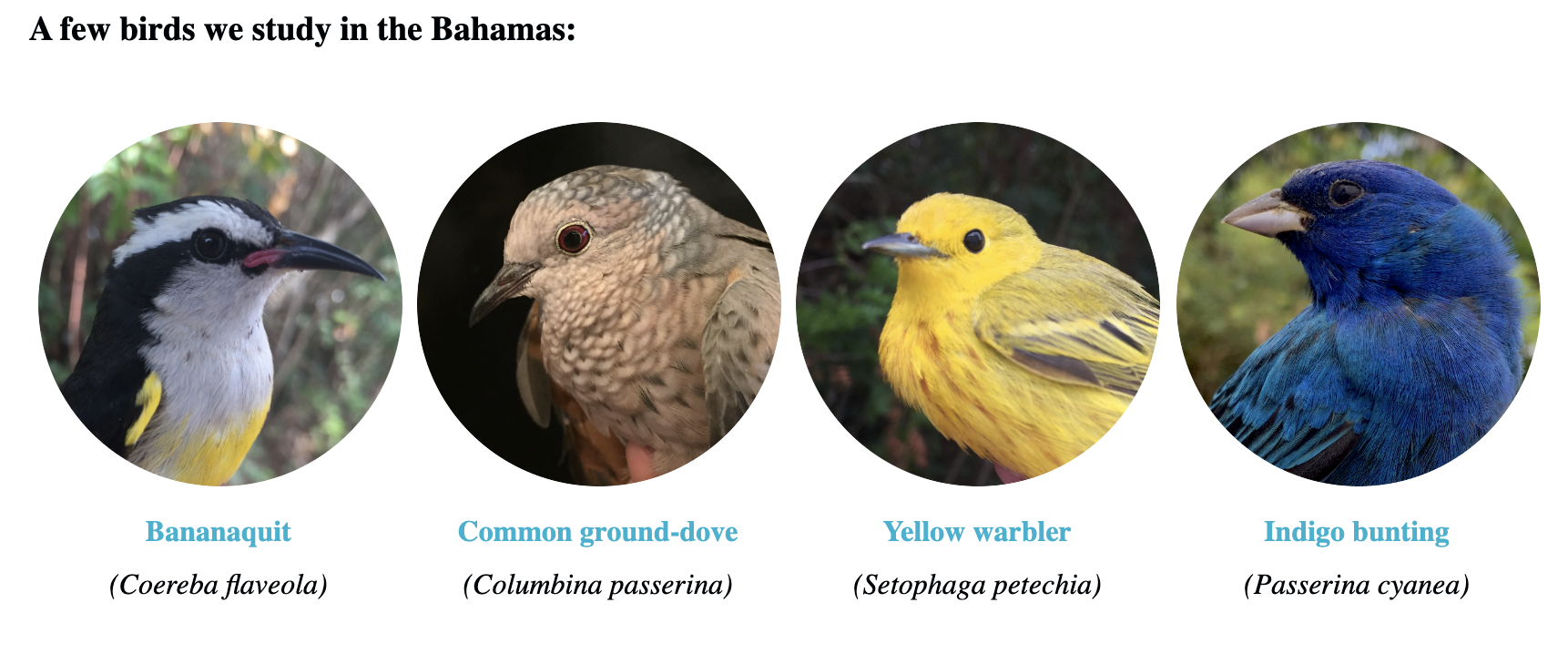Coevolutionary ecology and population genetics
of Bahamian birds and their parasites

Main Content
Island species are particularly vulnerable to extinction. This may be due, in part, to a relative inability of inbred island species to combat parasites. The Bahamas consists of hundreds of islands that are home to over 350 species of birds, of which 150 are common. Surveys conducted over the past century provide basic information concerning the diversity and distribution of the Bahamian avifauna, yet little is known about the parasites of these birds. Our research in the Bahamas has two major aims:
(1) Characterize the parasites of Bahamian birds. To do this, we are actively collecting, identifying, and quantifying the parasitic lice and mites of Bahamian birds (primarily songbirds). Once birds are captured in mistnets, we take several morphological measures, sample ectoparasites from their plumage and sample blood to survey for haemoparasites parasites. We then release the birds (unharmed). Parasites specimens will be deposited in PIPeR and other collections around the world. Molecular data obtained from bird and parasite specimens will be used to understand patterns of host-parasite biogeography, divergence across this island archipelago (as we have done in other systems in the past).
(2) Determine how Bahamian birds combat parasites. Birds combat ectoparasites in many different ways. Many species of birds have a small overhang at the tip of their bill that is used to remove and crush parasites found in their plumage when they preen. All else being equal, birds with overhangs that are too short, or overhangs that are too long, are not as good at combating parasites. Some species of birds have diets that preclude the formation of an overhang for optimal parasite removal. For example, some nectivorous birds, such as the bananaquit (Coereba flaveola), have little or no bill overhang. At the opposite extreme, raptors have large overhangs that are used for tearing meat. We are investigating whether these species are effective at controlling parasites. We are also investigating alternative morphological and behavioral defenses that these species may use to defend themselves against parasites.

Our main base in the Bahamas is the Gerace Research Centre (GRC), on the north end of the island of San Salvador (see maps).

Although most field days consist of moving around the island to survey birds, bird parasites, and quantify bird behavior, some days we cool off by snorkeling in the harbour to see other wildlife in the area. Here are out trusty field assistants Austin (left) and Sonora (center) showing additional wildlife in the area. One of the dozens of Green Sea Turtles (right) that live in the harbour near the Gerace Research Centre. (Photo by Sonora Clayton).

Main Content
Related publications
Please note that the PDFs are for personal use only, definitive versions are available from the publishers.
Bush, S.E., D.H. Clayton. 2018 Anti-parasite behaviour of birds. Philosophical Transactions B 373: 20170196. doi.org/10.1098/rstb.2017.0196 or PDF
Villa S.M., Koop J.A.H., Le Bohec C., and Clayton D.H. 2018. Beak of the pinch: anti-parasite traits are similar among Darwin’s finch species. Evolutionary Ecology 32:443-452. PDF.